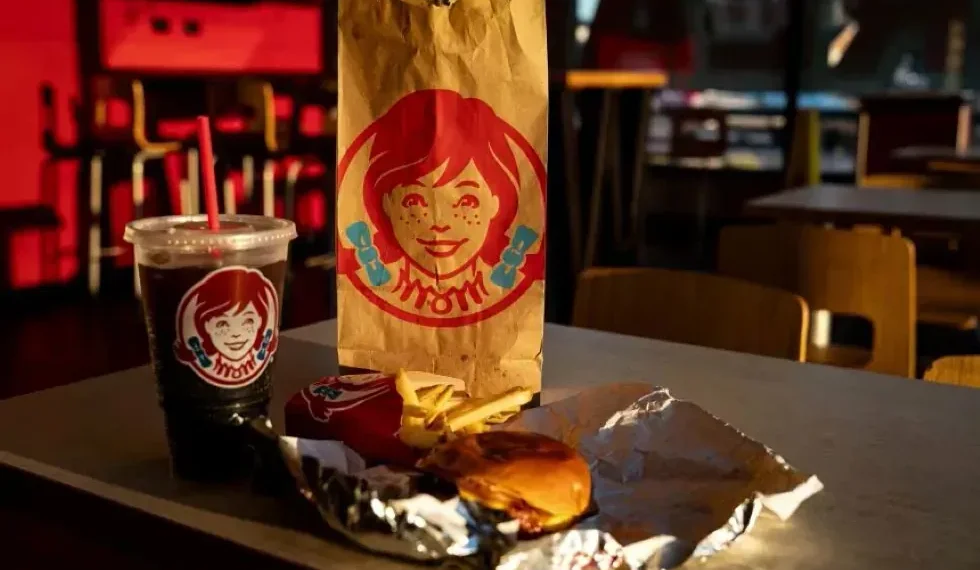Wendy’s has announced plans to close hundreds of its restaurants across the United States as part of a major restructuring effort aimed at strengthening its franchise network and boosting profitability. Interim CEO Ken Cook confirmed that between 200 and 350 U.S. locations—roughly a “mid-single-digit percentage” of its 6,000 outlets—will shut down over the next two years.
Cook said the closures will primarily affect restaurants that have “consistently underperformed” and are weighing down the chain’s broader performance. The process is expected to begin later this year and continue through 2026.
“These actions will strengthen the system and enable franchisees to invest more capital and resources in their remaining restaurants,” Cook told analysts. “Closures of underperforming units are expected to boost sales and profitability at nearby locations.”
No official list of affected branches has been disclosed, but the company said it would work closely with franchise owners to manage the transition.
A Difficult Period for the Fast-Food Chain
This move follows a series of earlier closures, including about 140 Wendy’s locations that were shuttered last year for similar reasons. The new wave of closures underscores the company’s broader effort to streamline operations and improve financial performance amid growing competition in the U.S. fast-food industry.
Wendy’s recently reported a 4.7% decline in same-store sales across the United States during the most recent quarter, contrasting sharply with gains reported by rivals McDonald’s, Burger King, and Shake Shack. Analysts say Wendy’s has struggled to maintain market share as consumers increasingly favor promotional deals, limited-time offers, and aggressive marketing campaigns by competitors.
“Wendy’s needs to redefine its value proposition,” said one industry analyst cited by Reuters. “The market has become extremely competitive, and brand loyalty is increasingly driven by price and product innovation.”
Focusing on Franchise Investment and Efficiency
Cook emphasized that the closures are intended to refocus Wendy’s operational strategy and ensure that franchise owners can reinvest in stronger-performing outlets. The company believes concentrating investment in high-traffic areas will yield better returns while modernizing restaurants to align with consumer expectations for digital ordering and delivery.
The restructuring plan also aims to reduce inefficiencies in supply chain and labor costs, which have risen sharply in recent years. Industry observers say the move reflects a broader trend among fast-food chains prioritizing operational efficiency and profitability over rapid expansion.
Product Innovation Offering Signs of Optimism
Despite current challenges, Wendy’s sees positive momentum from recent product launches. Cook highlighted the success of its new chicken tenders—branded as “Tendys”—which exceeded sales expectations and sold out in several markets before formal advertising began.
“We’re looking forward to continuing that momentum,” Cook said. “This is an encouraging first step as we look to reestablish our leadership position in chicken.”
The company has been expanding its menu in an effort to attract younger consumers and adapt to shifting dietary trends, including higher protein options and customizable meal choices.
Industry-Wide Pressures and Competitive Landscape
The fast-food sector has faced heightened economic pressure over the past year as inflation and rising labor costs erode profit margins. According to data from the National Restaurant Association, average menu prices across major chains have risen nearly 6% year-over-year, leading some consumers to trade down or dine out less frequently.
Competitors such as McDonald’s and Burger King have leveraged larger marketing budgets and extensive digital loyalty programs to sustain customer traffic. McDonald’s, for example, reported a 3.5% increase in U.S. same-store sales in the last quarter, attributing the growth to its value deals and app-based promotions.
Wendy’s leadership believes that a more disciplined approach—focusing on store quality, digital integration, and core menu innovation—will help stabilize its market position and restore profitability by 2026.
Outlook for Wendy’s and Its Franchise Network
While the closures mark a significant contraction, analysts note that Wendy’s long-term prospects remain viable if it successfully consolidates its brand presence and capitalizes on emerging consumer trends. The company’s strong franchise base and international growth potential could offset domestic declines in the medium term.
Wendy’s currently operates over 7,000 restaurants globally, with roughly 6,000 in the United States and the remainder across Canada, Europe, Asia, and Latin America. Expansion in international markets, particularly in Asia-Pacific, continues to be a key growth area for the chain.
Cook concluded that the turnaround plan is designed not only to improve short-term financial metrics but also to ensure sustainable growth. “We are taking deliberate, disciplined steps to position Wendy’s for long-term success,” he said.
This article was rewritten by JournosNews.com based on verified reporting from trusted sources. The content has been independently reviewed, fact-checked, and edited for accuracy, tone, and global readability in accordance with Google News standards.
Stay informed with JournosNews.com — your trusted source for verified global reporting and in-depth analysis. Follow us on Google News, BlueSky, and X for real-time updates.
JournosNews.com follows Google News content standards with original reporting, verified sources, and global accessibility. Articles are fact-checked and edited for accuracy and neutrality.













